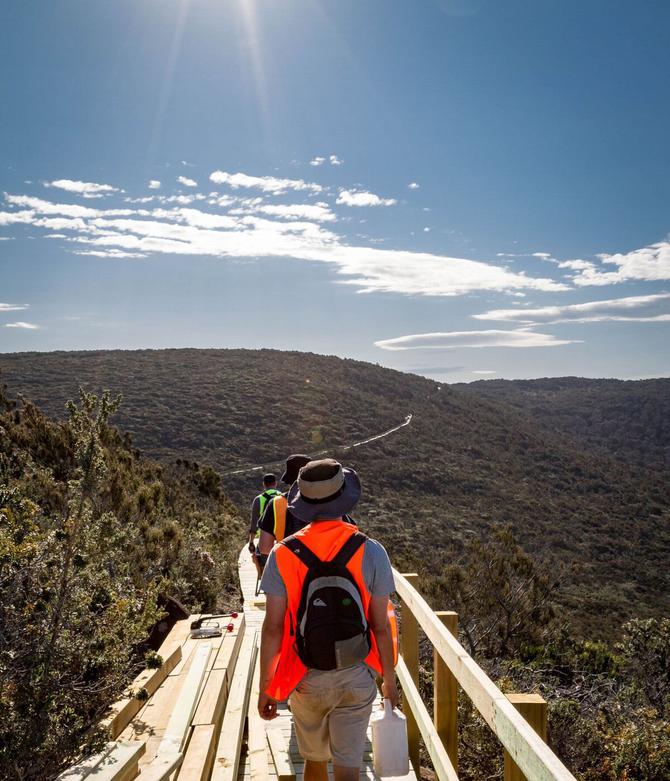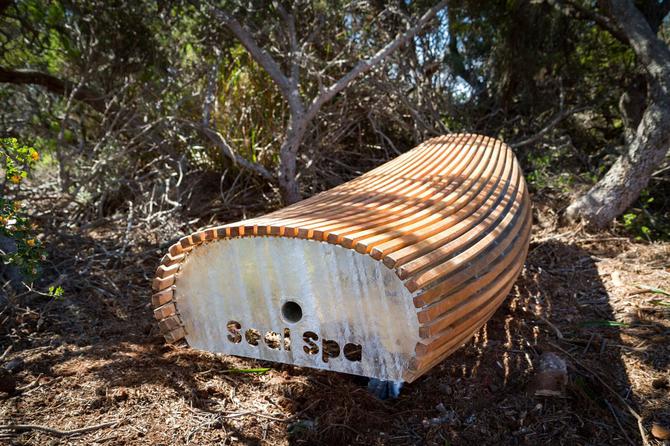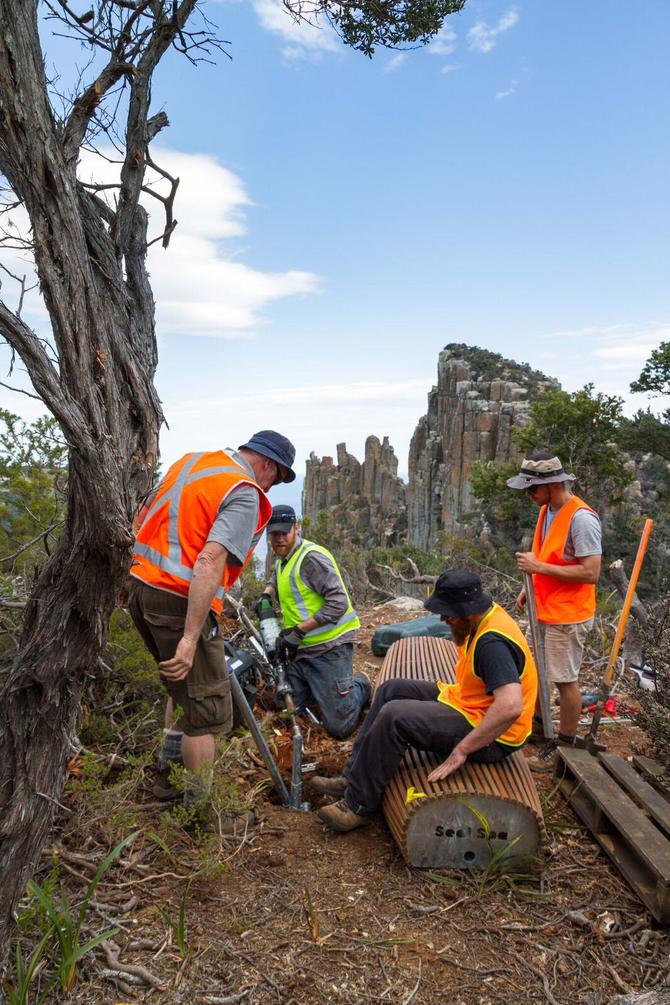Simon Ancher
Simon Ancher is an established award winning designer and is the Program Director of Furniture at the School of Architecture and Design in the Faculty of Science, Engineering and Technology.View Simon Ancher's full researcher profile
We want to provide content that's relevant to you. Your options are stored in a browser cookie which you can delete at any time via the link below.
Simon Ancher, Program Director, Furniture Design, said “We really push the boundaries with what we expose our students to equipment-wise and experience-wise. In second year, we run a real-life public seating project.
An opportunity arose to create the seating to line the track on the Three Capes Walk. Its going to be an internationally marketed venture.
Each student had their own site and bench to work on. The benches are more than just a resting place, they tell a story about the environment, forming part of the interpretation of the walk.
Each bench has a name embedded, included or attached, that acts as a story starter. Forever linked, Windsong, Converging on the Shelf, The Dark Side, and Blood on the Velvet Lounge are examples.
Walkers are then encouraged to engage with the story by reading more about it in a book that they carry on the walk.
Mr Ancher said “We took the students down in week 1, we had a site visit, we all had to walk 46 kilometres in two days, so it was pretty extreme. We visited most of the sites, we saw wedge tailed eagles, we saw seals, we really soaked up the experience.

When the students came back to the University, they had to do a site analysis and respond to their brief set by Parks.
“The next step was to develop concepts and ideas and present half scale models back to the Parks and Wildlife staff, which were well received and approved,” said Mr Ancher.
“Over a 13-week time slot, we’ve done the site visit, the design concept, design development, mocking up and prototyping, manufacturing and making, getting the gear down to the Tasman Peninsula, dropped in by helicopter, and then installed it all.
Its an amazing experience for second year students, for anyone really! Breathtaking scenery, helicopter rides… and the true benefits that students will get out of it I don’t think they’ll realise until a few years down the track, when they start to see what other students have been involved with and they’ll think, is that all? because we did this.
“You can’t get a better experience than that in terms of real life, real job, meeting the budget, meeting the timeline, installing. Their CV at the end of second year is looking really impressive. And the experience gives them so much confidence,” he said.
Second year student, Matt Howe, said “It’s a great experience getting a real life project and seeing what real deadlines are like.
“Getting to the end of the project and saying I can complete that without the safety net of being in class builds a lot of confidence. There’s no saying I’ll give myself another week, there’s a helicopter booked!
The creative process is not something you can force, but ensuring that it is done for a client is how it is out in the real world. It’s an invaluable experience for us and we’ll be able to take it out into our careers.
“Furniture designers want to make things for other people to appreciate. So seeing something we make out in the public domain is pretty exciting.

“We’ve all had to work together to get this thing completed, so we’re all sharing that experience as a group.”
“Plus, the exposure that we’re going to get from this work on the Three Capes track will be amazing.”
Fiona Rice, Interpretation Coordinator, Parks and Wildlife Tasmania was the client for the project.
Each seat had a name, which we call a story starter. The brief to the student was to create a seating form that began to tell that story. They also had to fulfil a whole lot of requirements as well. The seat had to last up to 15 years in the field with little to no maintenance. We gave them a materials palate to work with, so they had to work within that limited range and they had to work within a specific timeframe.
“They had to make a 50% scale model. Some of the designs we tweaked but they were pretty spot on right from the outset so we were stoked.”
“The result is above and beyond our expectations, and everybody that has seen them has said that. I had ideas of what we might get, but we were all blown away. Really professional,” she said.
“We took a really professional approach with the students. I treated them as if they were any other client that I was working with. This is something that is fantastic to go on their CV – how often do you get to work in an environment like this on a project like this?”
Piqued your interest in furniture design? Here’s a run down on what the rest of the course has to offer.
Simon Ancher, Program Director, Furniture Design said “The first year is about experimentation and learning and finding out what you don’t know. Getting a chance to play with different materials, techniques and methodology. Learning about what it is that makes you tick as a designer and maker. Learning from mistakes and building your knowledge bank.
“The second year is the public seating project” he said.
As students
move through the course they start to be exposed to the range of design areas
and find their niche.

They create an individual portfolio and body of work. In third year they design their own exhibition. They do all the documentation for it, complete the install, work on a catalogue, create individual portfolios, and participate in a photography shoot. The graduate exhibition is held at the Design Centre, an internationally awarded building. It’s a highly regarded gallery space and its got a lot of prestige.
Students can go on to be designer/makers, work for an architectural firm, furniture design and manufacturing house. The course allows students to tailor each of the assignment tasks to their area of interest.
“Its quite flexible in that way. The course can really be shaped to what you want to achieve.”
The University of Tasmania uses cookies to deliver content that’s relevant to you. We rely on cookies to remember your preferences, provide personalised content, and to analyse our website traffic. You consent to our cookies if you click “Accept”. Please refer to our privacy policy for more information.